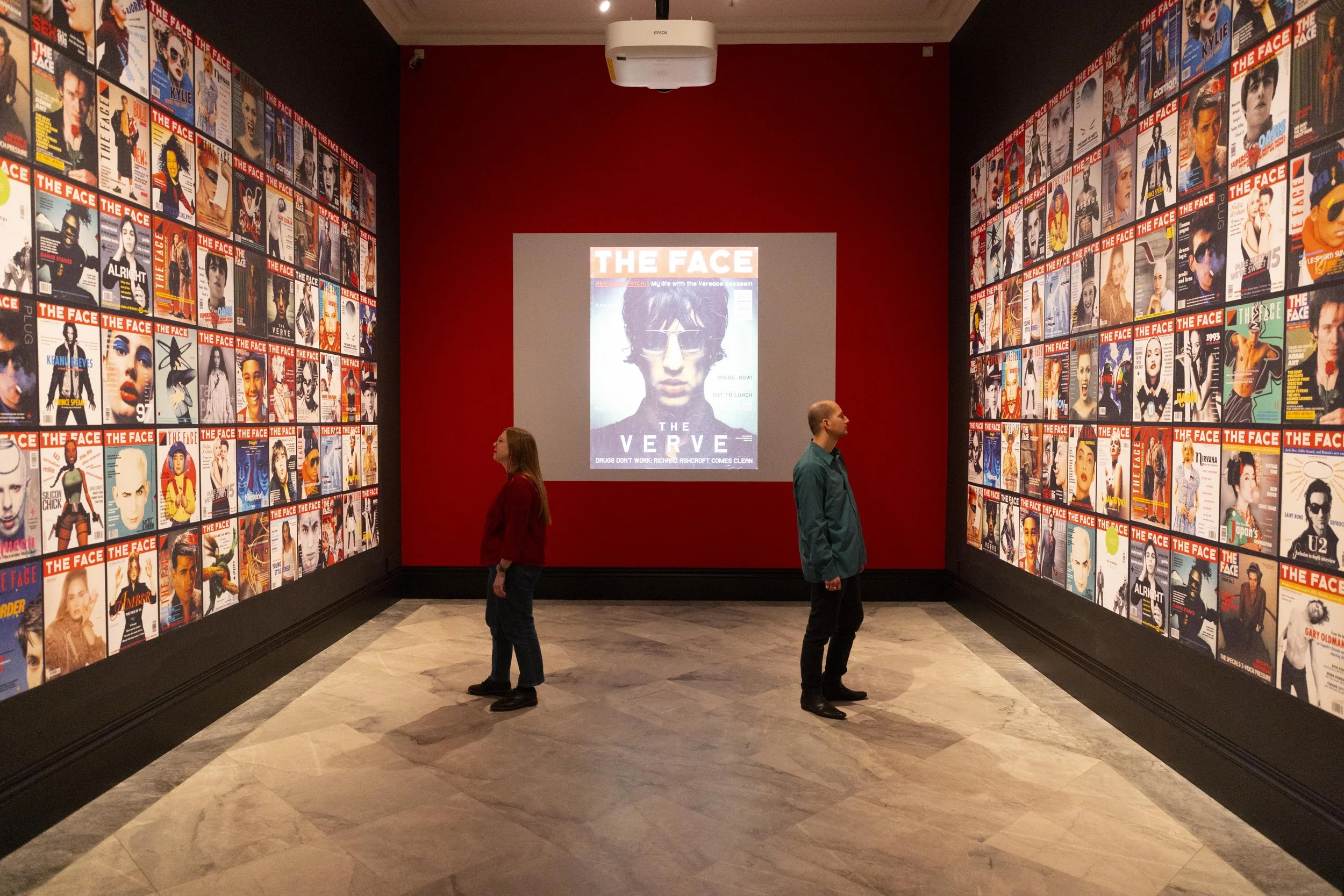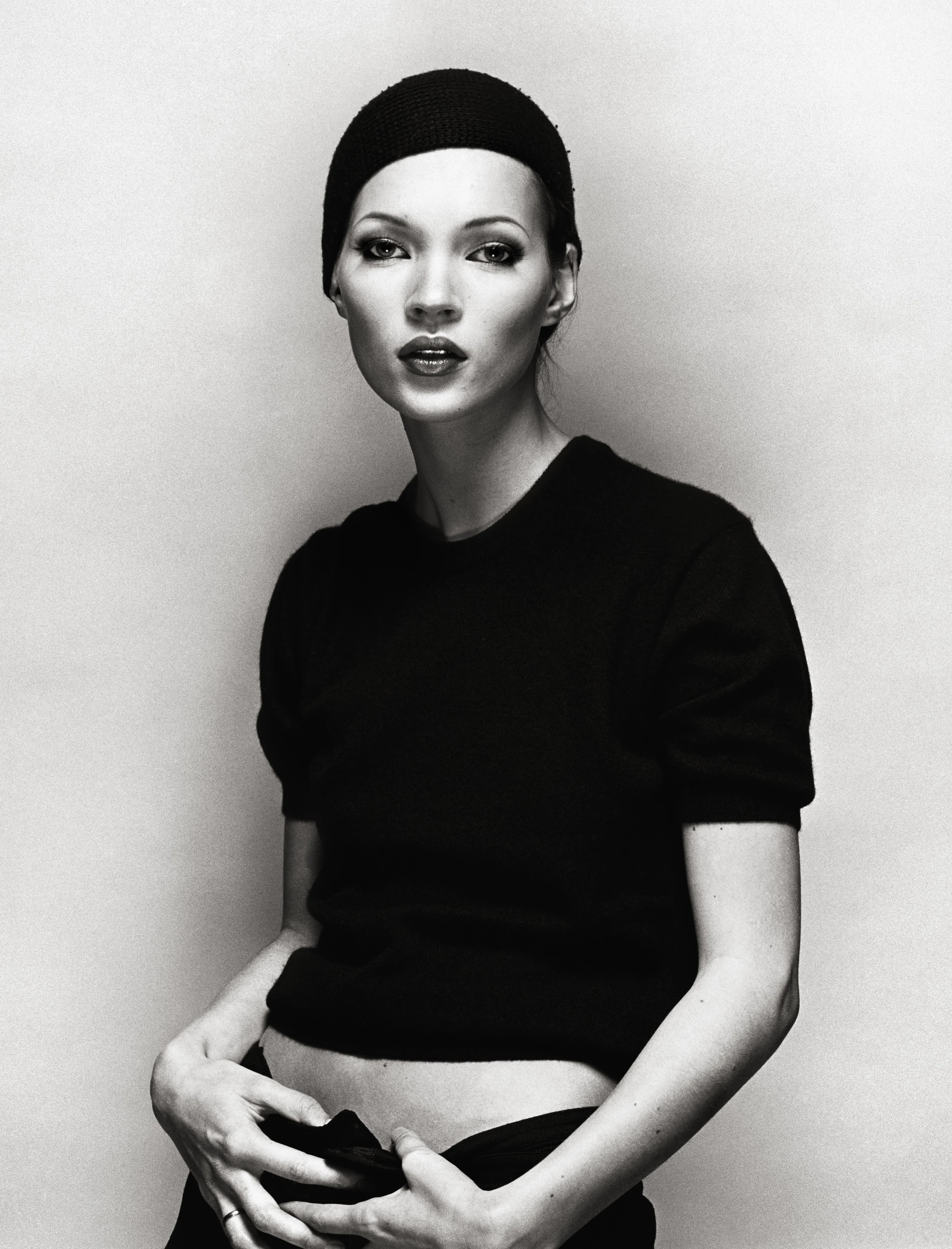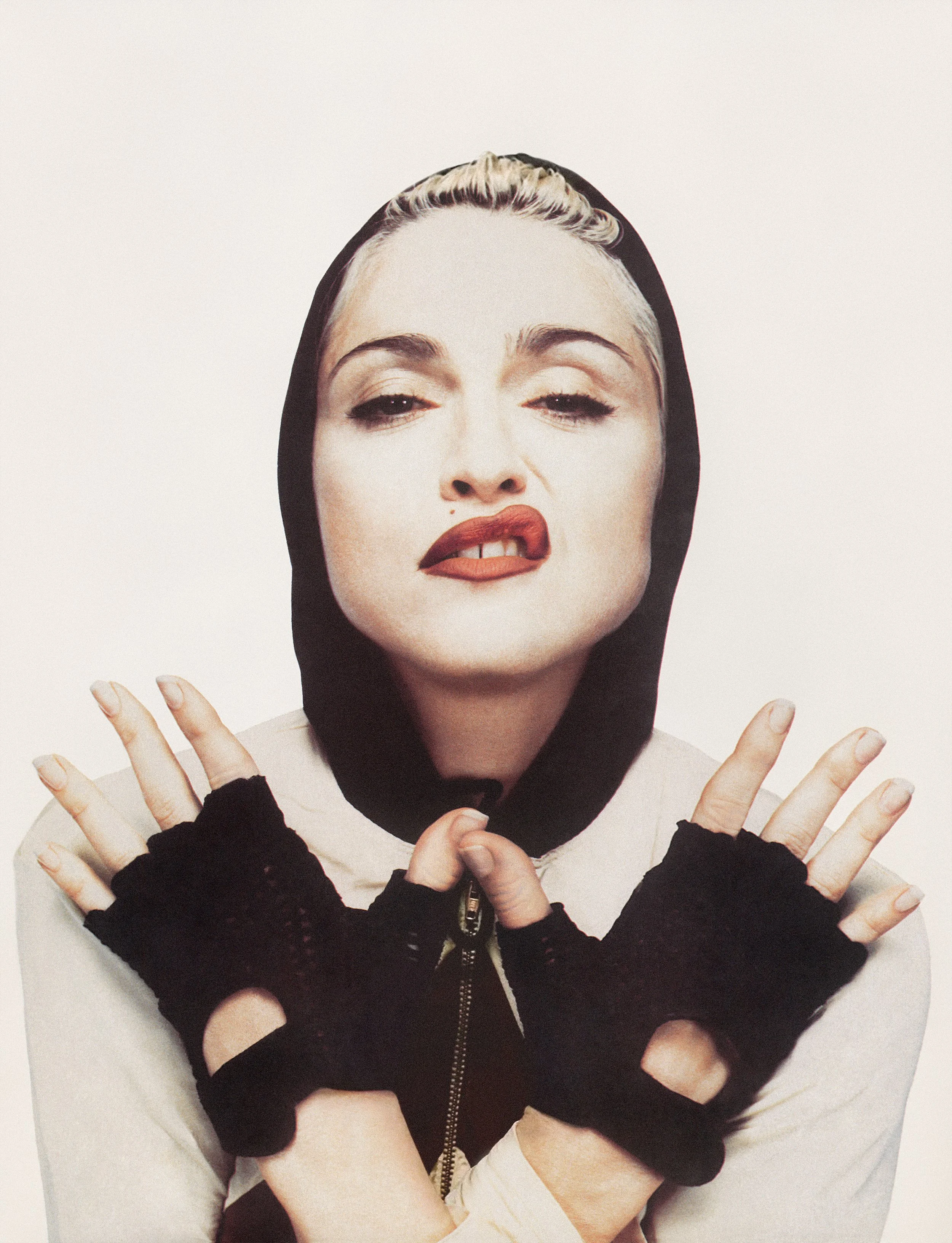By Evan Moffitt, April 10, 2025
Nostalgia is very much in season in London this spring. Never mind all that rot about new beginnings. From ‘Leigh Bowery’ at Tate Modern to ‘The 80s’ at Tate Britain, several shows look back with longing at a time when ‘Cool Britannia’ was still a twinkle in Tony Blair’s eye. The mood is overwhelming as you enter ‘The Face Magazine’ on view at the National Portrait Gallery until May 18, where covers from the titular, taste-making music and style magazine flank a video montage of English national football celebrations, the Spice Girls world tour, MySpacechats and the inauguration of the Millennium Dome. The video soundtrack flips from New Order to Daft Punk as culture zooms by in a relentless forward scroll. Then, when the video reaches 2004––the year The Face closed after nearly 250 issues––it goes dark and loops back to the beginning. Publishing has been adrift more or less ever since, though this exhibition doesn’t explain why.
It’s difficult to imagine a magazine today imitating some of The Face’s bolder editorial decisions, like cropping Kevin Cummins’s portrait of Stephen Morris so close that only the drummer’s right eye and forehead remain visible on the July 1983 cover. Of Frankie Goes to Hollywood by Sheila Rock (March 1984), we get just a tongue and a tangled lasso. The Face was the only magazine of its kind to credit photographers on its cover, a sign that––at least at the outset––contributing artists were considered just as important as the celebrities they photographed. And celebrities were a big part of its brand: who can forget Peter Ashworth’s 1983 portrait of Annie Lennox in her leather bandit mask, or Grace Jones at a battery of cymbals, shot in 1981 by Jean-Paul Goude? Ashworth was also responsible for ‘The Face Review of ‘82’ in which models’ fashions are measured up by acerbic annotations in the style of Hal Fischer: a white woman’s dreadlocks are an homage to the Culture Club or ‘Cultural Colonialism’. Vogue wouldn’t dare.
Much of the show is given over to the magazine’s trendsetting legacy. In some of these pictures, the styling seems decades ahead. One room celebrates the androgynous men’s fashion spreads devised by Ray Petri and Jamie Morgan, which are soft edged but full of swagger. Nick Knight and Simon Foxton’s post-punk couture from February 1986, with its bottle-blonde model in ripped-up Gucci on a Pantone background, could be torn out of a lookbook from the mid-2000s. The Face’s documentary photographers, meanwhile, were producing some of the most bracing images of subcultural scenes in Britain and beyond: see, for instance, Nigel Shafran’s 1991 photograph of Bristol head-bangers, their faces obscured by airborne fringe, or Ewan Spencer’s 2000 portrait of a visibly distressed, overweight young man sat next to a snogging couple on the sidelines of a rave.
By the 1990s, an aesthetic divide had emerged in the magazine’s pages between the fashion crowd and the scene kids. A thousand miles separate the raw, rock n’ roll aesthetic of Corinne Day––with her black-and-white, large-format pictures of street-cast British teens and a young Kate Moss, posed as a sun-drenched hippie—from the candy-coated maximalism of David LaChapelle. The latter’s 1995 shot of Leonardo DiCaprio steering a white stallion past a porno theatre on Hollywood Boulevard is saturated enough to sear your retinas. It’s an artifact of a time when fashion magazines had real budgets and photographers could actually get celebrities to do things, like Norbert Schroeder’s having Ewan MacGregor curl up on a filthy London curb in 1996––a reference, perhaps, to Oscar Wilde’s line about being “in the gutter…looking at the stars.” Of The Face’s final years, nothing feels quite so bloated as Steven Klein’s October 2002 homage to Larry Clark’s Kids, a stitched group portrait that charts the demise of heroin chic along with a few of its subjects’ acting careers. In contrast to its cinematic referent, the picture is as phony as a Pre-Raphaelite painting.
Little surprise that celebrity mugs abound in a show called ‘The Face’ at the National Portrait Gallery. Yet, in what amounts to a bland commercialization of the magazine’s legacy, this emphasis also reflects one of the algorithmic biases that contributed to its demise, as “lifestyle” became the domain of social media, where editorial decisions are outsourced to face-scanning machines. The irony of the internet is that more often means less: there’s little mention of the political commentary that ran regularly in The Face alongside its scene reports and glossy fashion spreads–instead, the images here feed our irredeemably short attention spans. I had no idea, for instance, that Jean Baudrillard and J.G. Ballard were interviewed until I read Ekow Eshun’s essay on the magazine’s literary content in the doorstop catalogue, where it’s relegated to a single page.
The exhibition ends with a slideshow of images from The Face since its acquisition and relaunch in 2019 by Wasted Talent Media. Many are strong, but more for the way they harken back to an earlier era. The new magazine’s desultory written content, meanwhile, seems fit for a tabloid. Pressured by changing reader habits, publications have stopped paying writers a living wage––though this betrays a lack of long-term vision in favor of short-term savings. A good magazine, one fit to last, still depends on a strong voice in both text and images. Nostalgia for a time when there was more money to achieve that isn’t going to change a thing.
Evan Moffitt has written for The Guardian, The New York Times, Financial Times, Artforum,Aperture, 4 Columns and Frieze. He has been the digital editor of BUTT since 2024.
"The Face Culture Shift" National Portrait Gallery, London.
GLEN LUCHFORD "Kate Moss" March 1993.
JEAN BAPTISTE MONDINO "Madonna" June 1990.
SEAN ELLIS "The Dark Knight Returns" August, 1998.
STÉPHANE SEDNAOUI "Voici Paris" June 1988






